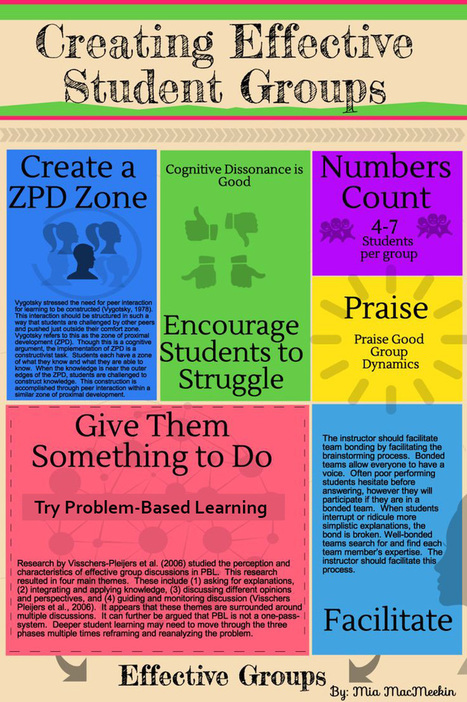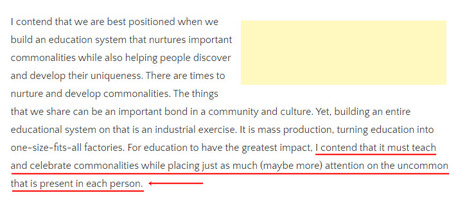Grouping students is easy; creating effective student groups is less so.
The following infographic from Mia MacMeekin seeks to provide some ideas to help make group work easier in your classroom. The strength of this particular graphic is in the range of the ideas. The first tip refers teachers to Vygotsky’s Zone of Proximal development, which frames student ability in terms of a range: what they can do unassisted, what they can do with the support of a More Knowledgeable Other (MKO), and what they cannot do even with support. This is different for each student, and understanding these ranges for students can help inform grouping decisions, whether you’re using a peer instruction model, ability grouping, or another approach.
Learn more:
Via John Evans



 Your new post is loading...
Your new post is loading...





![4 things you need to know to help your students manage their online reputation [Infographic] | 21st Century Learning and Teaching | Scoop.it](https://img.scoop.it/j7dVyVsW9VcD8NbMbZtXoTl72eJkfbmt4t8yenImKBVvK0kTmF0xjctABnaLJIm9)






Learn more:
https://gustmees.wordpress.com/2015/07/19/learning-path-for-professional-21st-century-learning-by-ict-practice/